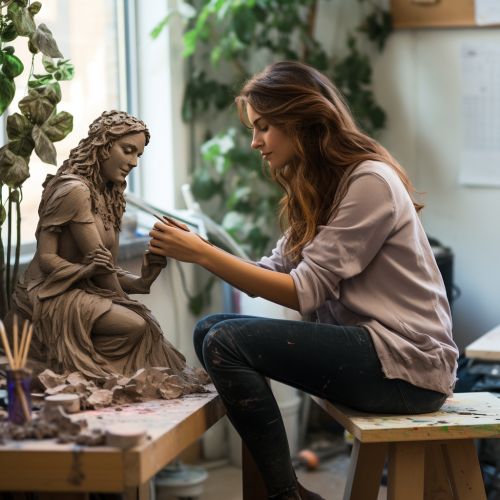Sculpture and Psychology
Introduction
Sculpture and psychology intersect in the realm of art therapy, where the creation and interpretation of three-dimensional forms can provide valuable insights into an individual's mental state. This article will delve into the complex relationship between sculpture and psychology, exploring the use of sculpture in therapeutic settings, the psychological impact of viewing sculpture, and the psychological principles employed by sculptors in their work.
Sculpture in Art Therapy
Art therapy is a form of expressive therapy that uses the creative process of making art to improve a person’s physical, mental, and emotional well-beingArt therapy. The use of sculpture in art therapy allows individuals to express thoughts and feelings that they may find difficult to articulate in words. The tactile nature of sculpture provides a unique sensory experience, which can help individuals to connect with their emotions and explore their subconscious thoughts.


Psychological Impact of Viewing Sculpture
Viewing sculpture can have a profound psychological impact. This is due to the unique three-dimensional nature of sculpture, which allows viewers to engage with the artwork from multiple perspectives. This can stimulate a range of cognitive processes, including perception, attention, memory, and emotion. The psychological impact of viewing sculpture can also be influenced by factors such as the viewer's personal experiences, cultural background, and emotional state.
Psychological Principles in Sculpture
Sculptors often employ psychological principles in their work, consciously or unconsciously. This can include the use of symbolism to evoke certain emotions or ideas, the manipulation of scale to alter the viewer's perception, and the use of form and space to create a sense of movement or tension. Understanding these principles can enhance the viewer's appreciation of sculpture and provide a deeper understanding of the artist's intent.
Conclusion
The intersection of sculpture and psychology provides a rich field of study, with implications for both art and mental health. Whether used as a therapeutic tool, a means of self-expression, or a vehicle for exploring psychological concepts, sculpture has the power to engage the mind and stir the emotions in profound ways.
See Also
Art and Mental Health Art Therapy Techniques Psychology of Visual Art
